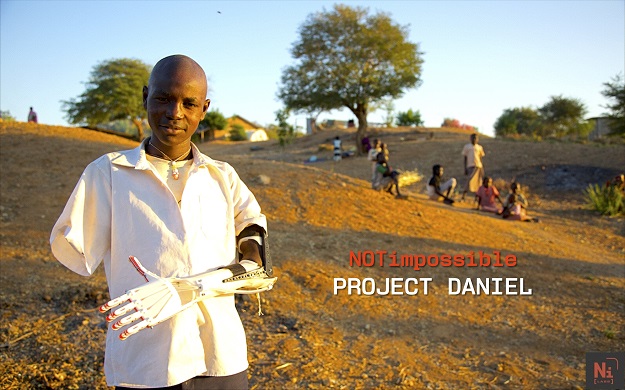
Carpenter Richard Van As suffered misfortune when he accidentally cut off four fingers in South Africa during a woodworking mishap in 2011. After this accident, Van As was inspired to create a prosthetic solution to his problem by developing an innovative tech that enabled him to perform his daily activities just as he did before he became fingerless. He wanted an affordable means of obtaining prosthetics that he could produce himself. To brainstorm and actualize this project, Van As teamed up with prop designer Ivan Owen to create “Robohand.”
In 2012, the duo made great strides with in-depth research and tests for this endeavor. For the initial prototypes, Van As and Owen used two Makerbot Replicator 2 3D printers that were donated to them. The first prosthetic created in 2013 was a 3D-printed robotic hand that was customized with mechanical fingers and hands. This prosthetic takes the preexisting motion of your joints and there are no motors or batteries attached to weigh down the user.
The 3D-printed substance that the limbs are made from is biodegradable made from an medical Orthoplastic material that is customized to fit each individual user. It is molded to the wearer to eliminate any potential skin problems, injuries, or infections that might occur. The material is washable, nonconstrictive, and can be used on even the most sensitive skin. The stainless-steel hardware used in the prosthetics is durable, lightweight, and comfortable for the wearer. RoboHand has open-sourced the free code since this technology has not yet been patented.
Most recently, the team added a 3D-printed robotic leg to the list of prosthetics they have created; previously they had made a robotic 3D-printed finger, a 3D-printed hand, and a robotic 3D-printed arm. Traditional prosthetics are ridiculously expensive and cost nearly the proverbial arm and a leg to obtain. Robohand hopes to provide people with more affordable prosthetics and also wants to bring prosthetic options to places in the world where prosthetics are unavailable. Van As and Owen have fitted over 200 people in South Africa with this technology as part of their mission called “Project Impossible.” They hope to spread the word of Robohand around the world and help as many people as possible with 3D-printed prosthetics.
Story via Robohand
Advertisement





